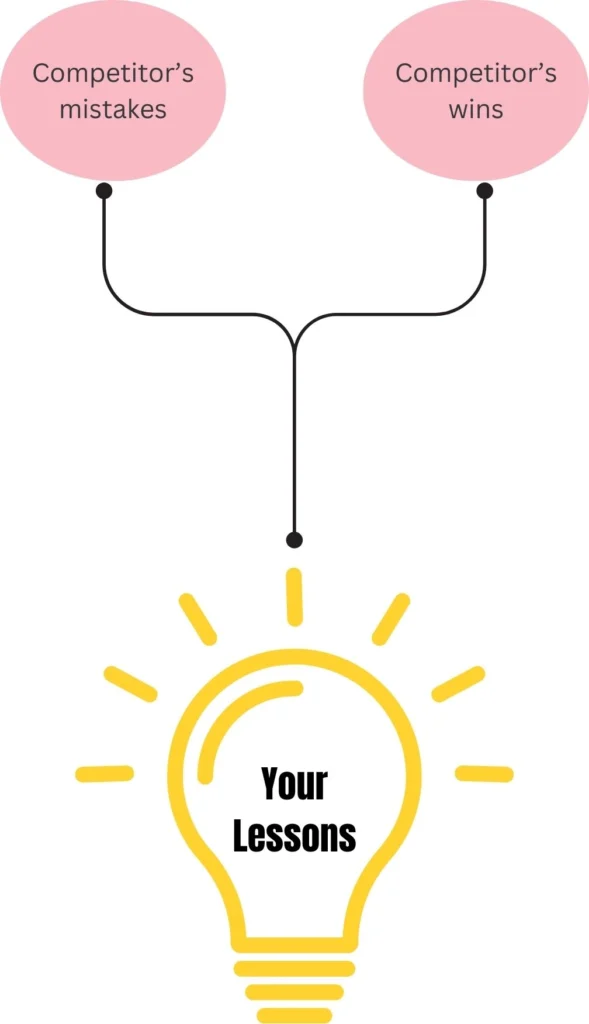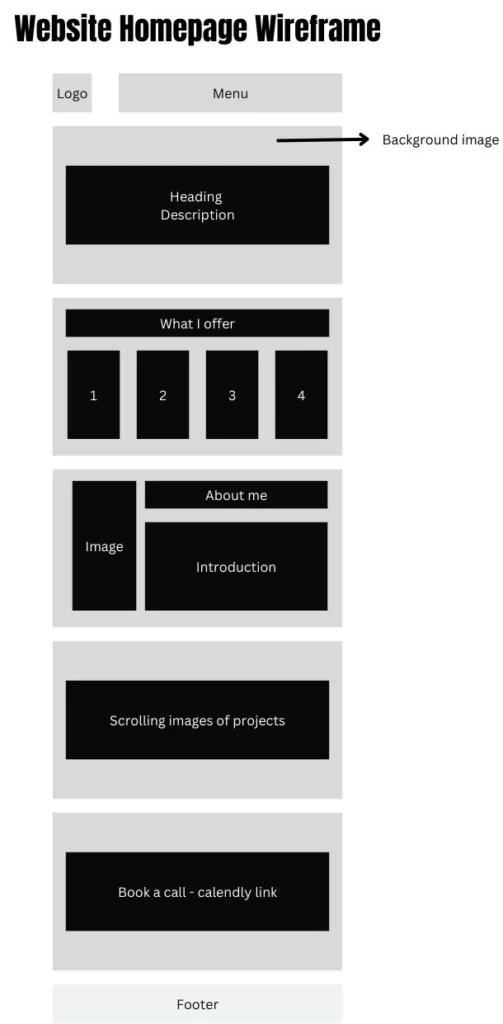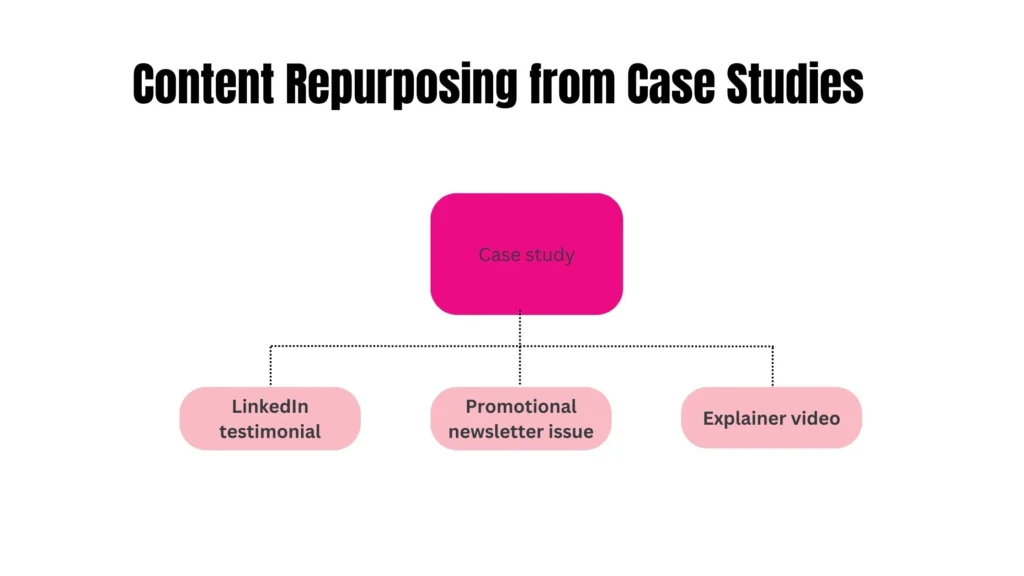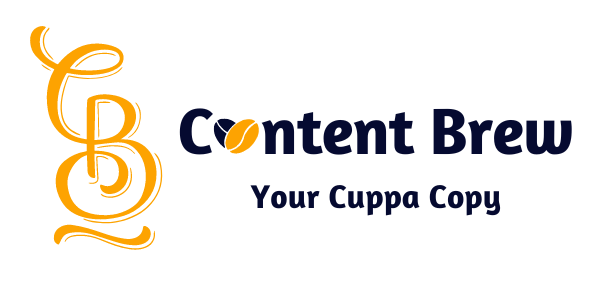The first step in creating a website that your audience never forgets is creating a website content plan.
“What to put in my website to make my audience resonate?”
“Is the homepage enough? Or does a website need more?”
“How can my website affect my sales?”
The website content plan will answer all your questions. So, let’s start with what you need to create a content plan for your website.
1. Define the Purpose of Your Website

A clear purpose is the foundation of any effective website. After working with X+ clients, we’ve realized that clients believe building a website solves all branding problems. Only owning a property online doesn’t do much if your audience can’t remember it after the first visit.
To ensure that’s not the case, you should ask how you plan to serve your audience through your product or service. If your goal is to sell a product, your website’s primary function should be to guide users toward purchasing. If the goal is to create brand awareness, the primary function should be to educate readers about your brand.
The goals can change even for the primary purpose of generating business revenue. A service-based or B2B brand might need to generate leads, but a product-based business needs to generate sales or book demos.
You see, the website’s purpose isn’t a superficial entity. You need absolute clarity. Whatever that goal is, it’s crucial to understand why your website exists before you start creating content. This clarity will serve as a roadmap for all of your content creation.
2. Define Your Unique Selling Proposition

Our founder, Ankita Ahuja, has been in the content industry for 8+ years. She’s seen hundreds of businesses take off and compete. Believe her when she says the business space is becoming saturated.
Your product, service, approach, or target audience is likely similar to a competitor. What would make your audience choose you over your competition?
That’s your unique selling proposition (USP). It’s nothing fancy but a simple differentiator that gives you an edge over others.
Consider Trello vs. Asana, for example, in the infographic below.

Understanding what sets you apart and who you’re speaking to is fundamental.
3. Focus on TA Vocabulary, Problems, and Struggles
Continuing our discussion about why your audience should choose you over your competitors, we need to discuss the need of using the target audience’s (TA) vocabulary. TA vocabulary is the phrases, keywords, etc., that your target audience frequently uses to define their pain points and desired outcomes.
Your website content should speak directly to your target audience in their language.
For example, if your audience is C-suite executives, your content should include no-nonsense, straight-to-the-point language. C-suite executives don’t have much time to read lengthy and unnecessary text. Also, a subtle use of jargon is allowed, as these executives are familiar with that language and often use it themselves.
However, you can’t expect to use the same language for a kids’ brand. There’s no room for jargon in this case.
For your website to resonate with your target audience, you must dive deep into the specific vocabulary, problems, and struggles your audience faces. When your content resonates with the audience’s pain points and answers them directly, they build instant trust with you.
The next time they want to buy, think about who they choose. It’s You.
Tip: Create a list of keywords and phrases your audience uses to describe their challenges and goals. Integrate these naturally into your content to build an emotional connection and trust.
4. Do Competitor Research

Ignorance isn’t bliss, at least not in the business world. While you’re busy perfecting your website, your competitors are out there, potentially eating your lunch. But what if you could turn their strategies into your secret weapon?
You might find growth opportunities and market gaps by researching your competitors. There are two ways you can utilize competitor research:
- What the competitors did right helps you frame your strategy to recreate similar wins for yourself
- What the competitors got wrong can be your lessons to remember
We don’t conduct competitor research to copy others. It’s just a guiding force that keeps us on the right track.
It encompasses critically analyzing the unique sections, content topics, formats, etc., your competitors have incorporated into their websites. It’s about asking yourself, “What purpose does it serve?”
Identify any gaps that you can cash on. For example, if a competitor has failed to add case studies, add them to your website, as they will help increase conversions.
If the competitors have used mechanical language on the About page, make sure you make your About section lively, as if the readers get to meet you through that page.
Here are some action steps you can start with:
- Identify Top Competitors: List 5-10 direct and indirect competitors.
- SWOT Analysis: Assess their strengths, weaknesses, opportunities, and threats.
- Find Content Gaps: Topics they haven’t covered or covered well.
5. Prepare a Website Content Style Guide

Picture this: You’ve just launched your brand-new website. It’s sleek and modern but a hot mess of inconsistent messaging.
How the website reads matters as much as how it looks. Enter the unsung hero of brand cohesion—the content style guide.
Consider it your brand’s DNA. It’s a playbook that contains all the rules to make your website content chaos-free and synchronized. After all, you don’t want your readers to feel confused because of the inconsistent messaging all over the place.
Why Your Brand Needs a Style Guide?
Consider the brands that you most enjoy. Why can you recognize them right away? It’s not just their logo or color scheme—it’s their consistent voice across all platforms. Whenever I think of easy-to-understand and simple answers through blogging, I think of Hubspot. That’s what Hubspot has accomplished with its branding. That’s the power of a well-crafted style guide.
What should you include in your website’s style guide?
1. Tone and Voice: Your Brand’s Personality on Paper
Your brand is a person. Its certain values, unique way of speaking, and favorite colors define its personality. This all needs to be reflected on your website.
Now, what personality your brand adorns depends on how you want to position it. It can be the life of the party or an eloquent and distinguished speaker. It depends on your product/service, its impact on the audience, pricing strategy, USP, etc.
Your tone and voice guidelines should answer these questions:
- What adjectives describe your brand’s personality?
- How formal or casual is your language?
- What emotions should your content evoke?
2. Grammar and Punctuation
Sure, it might seem nitpicky, but consistency in grammar and punctuation can make or break your brand’s professionalism. Address these points:
- Oxford comma: Yay or nay?
- Abbreviations and acronyms: When and how to use them
- Numbers: Spelled out or numerals?
- Capitalization: When to capitalize (and when not to)
Tip: Choose between American or British English and stick to it. Inconsistency in it can be a big no-no for readers (I know because I’m one of them).
3. Visual Elements: Beyond Just Images
Set standards for podcasts, videos, images, infographics, and more.
- Audio Style: Music choices, intro/outro scripts, sound effects.
- Video Presentation: Presenter dress code, backdrop settings, logo placement.
- Brand identity: Brand color, brand fonts, brand logo, specifications for its use, etc.
Pro tip: Create a document to cover all aspects of your brand style guide, from writing to designing. Share this document with everyone working on developing your website and related stakeholders. Ensure everyone follows the brand guide.
Toastmasters International Organization offers an excellent example of a well-executed brand guide. As a past club member, I’ve seen firsthand how meticulous they are about their brand image.
6. Determine What Content You Want on Your Website
Not all content is created equal. Choosing what kind of content you want on your website is crucial.
I’ve seen many great websites with huge potential to leverage a blog not taking advantage of it. Imagine consistent lead flow (say 3-4 per week) with a consistent blogging strategy, that, too, completely organic. Wouldn’t you want that?
So, let’s see what other content you can create on your website besides the homepage.
Choose types that align with your goals and audience preferences.
Static pages:
- Homepage to give a peek into everything you are as a business.
- A vibrant about page talking about who you are, why you do what you do, who is a part of your team, etc.
- Landing pages for services/products, freebies, etc., are dedicated to explaining the individual offering, so you reduce friction between the audience’s visits and their conversion to customers.
Dynamic content:
- Blog posts: To share informational and educational content that helps solve your audience’s problems and navigates them through the buyer’s journey.
- News updates: To share new happenings about your business or industry in general and keep your audience updated.
- Case studies: To showcase your working process, the results you got for clients, etc. It helps build authority and establish your expertise.
- Interactive elements: You can also create quizzes, online tools, live chats, etc., to increase audience engagement and improve your ranking. This format has a high social sharing rate, offers a high-level user experience, and reduces bounce rates.
Here are some action steps you can start with:
- Audit Existing Content: See what’s performing well. Analyze what can be improved using tools such as Ahrefs Webmaster Tool or ScreamingFrog. Check if having a blog helps you achieve your business goals (in most cases, it does).
- Plan New Content Types: Based on audience preferences and industry trends. If video content is popular among your TA, consider adding how-to videos or webinars.
7. Create a Wireframe for Each Page

Wireframes are simple, visual blueprints of how the web pages would look. They are simple outlines that structure key elements of the webpage without adding the elements such as colors, fonts, images, etc.
You get a skeletal framework of your web pages, focusing on functionality and user experience.
Creating a wireframe for each page before you start designing it is a good practice. This helps you visualize every element and check if anything seems off-place. It also helps you explain your vision to the designer.
Here are some of the key elements of wireframes for each page on your website:
- Homepage: Headline, Hero image, USP, primary CTAs, featured content, primary services, testimonials, links to the important pages
- About Us Page: Company history, team bios, mission statement
- Service/Product Pages: Product images, detailed descriptions, reviews, CTAs, results achieved, features and benefits chart
- Resources: Blogs, whitepapers, guides, FAQs, case studies
Here are some action steps you can start with:
- Focus on the User Journey: Ensure intuitive navigation.
- Test with Real Users: Gather feedback to refine layouts.
8. Build a Sitemap/Layout of the Entire Site

While a wireframe is the structural layout of a single webpage, a sitemap shows the structural framework of the entire website. It works as a roadmap to show how each page is connected and what the website hierarchy looks like.
Having a sitemap or layout of the entire site ready helps you enhance user navigation and help search engines understand how your site works.
There are two types of sitemaps:
- XML Sitemap: Mainly for search engines, listing URLs to help with crawling and indexing.
- Visual Sitemap: For users and stakeholders, showing how pages are organized visually.
While your SEO plugin easily generates the XML sitemap, I’m focusing on the visual sitemap. Creating one helps you test how the website will function and get the structure approved by all stakeholders.
9. Work on SEO

It’s one thing to have a well-designed website with great content, getting it ranked on search engines is a different ball game. You need SEO-optimized content on every website page as 68% of online experience starts with a search query on search engines.
But remember, the old practice of stuffing the primary keyword a hundred times doesn’t work anymore. You need to be strategic about it.
Website SEO works on three levels: On-page SEO, off-page SEO, and technical SEO. I’ll explain each of these in brief.
- On-Page SEO: On-page SEO focuses on optimizing individual web pages to rank higher and earn more relevant traffic in search engines. It involves both the content and HTML source code of a page that can be optimized.
Key elements include:
- Title tags and meta descriptions
- Header tags (H1, H2, H3, etc.)
- Content optimization with relevant keywords
- Internal linking
- Image optimization (alt tags, file names)
- URL structure
On-page SEO is about making your content easily understandable for both users and search engine algorithms.
- Off-Page SEO: Off-page SEO refers to actions taken outside of your website to impact your rankings within search engine results pages (SERPs). The main focus here is building the site’s reputation and authority.
Key aspects include:
- Backlink building (getting high-quality websites to link to your content)
- Social media marketing
- Guest blogging
- Influencer marketing
- Brand mentions
- Local SEO (for businesses with physical locations)
- Technical SEO: Technical SEO involves optimizing your website’s infrastructure. It ensures that search engines can crawl and index your site efficiently.
Key elements include:
- Site speed optimization
- Mobile-friendliness
- Secure sockets layer (SSL) certificate
- XML sitemap
- Robots.txt file
- Structured data markup
- Fixing broken links and redirects
- Optimizing for Core Web Vitals
Remember, SEO is not a one-time task but an ongoing process. Search engine algorithms are constantly evolving, and so should your SEO strategy.
10. Add Visual Media
Hardly anyone pays attention to visual media on a website. Usually, websites use stock images to fill in the quota of visuals.
Ensure you add original visuals that represent your brand. Use high-quality, self-generated images that align with the content posted on each web page.
For example, on the About Page, Use your own pictures and the group pictures of your team, office, etc.
Use actual client screenshots, infographics, and original videos on blog posts and other pages to engage users.
11. How to Build the Blog
Like I said earlier, a blog section can benefit almost every website. Who wouldn’t want to generate 3-4 organic leads without spending on paid promotion, especially when Hubspot discovered that 55% of businesses benefit from a blog?
Here are a few things you need to make your blog a success:
Start with a thorough content strategy to help you determine your content pillars, keywords, and how you will use the content funnel and customer journey to your advantage.
I won’t go into much depth, but content strategy helps you with the following:
- Conducting keyword research and coming up with a calendar for at least three months
- Mapping keywords with your audience’s pain points so you create content that educates and converts
- Create a list of defined KPIs you should be measuring based on your business goals.
Once you’re sorted with it, you’ll start the actual content creation.
Note: Focus on creating a content funnel through your blog. That is, create content that targets your audience from the start of the buyer’s journey (the awareness stage) to the end, where they purchase at the decision stage.
This way, you ensure you bring in new audiences, nurture them into leads, and finally convert them with your content.
Here are some action steps you can start with:
- Identify 3-5 key themes that are crucial to your audience.
- Brainstorm sub-topics within each pillar to ensure you have many topics to write about.
- Use tools like Google Keyword Planner, Ahrefs, or SEMrush to identify high-potential keywords.
- Focus on long-tail keywords that align with specific audience needs.
- Plan content for at least one quarter in advance.
- To keep your audience engaged, mix in various types of content, such as long-form articles, listicles, videos, and infographics.
- Set deadlines for drafting, editing, and publishing content to maintain consistency.
- Post blog updates on LinkedIn, Twitter, Instagram, or Facebook platforms.
12. Develop a Content Calendar
After all strategizing and planning is done comes the hero of execution—consistency. How well you follow your website’s content plan dictates your success.
It can be challenging to keep churning out content or, for that matter, keep updating your static pages with the changes in your offers. That’s why it’s crucial to have a content calendar.
You can use tools such as Trello, Asana, or a simple spreadsheet to track the new content to publish, the published content, the content updates, the list of authors, etc.
Usually, a business website should post 2-3 blog posts each week. Even if you don’t have such a high frequency, it’s still essential to make an entry in your content calendar to keep your mind clutter-free and, most importantly, sane.
13. Content Repurposing Strategy
Okay, just now, I said it’s important to constantly create new content or at least update it. But that doesn’t mean you work equally hard on every piece. We have smart work in the form of content repurposing.
You don’t always need to create new content. One blog post can become at least:
- Four social media posts
- One YouTube video
- One newsletter issue
- Multiple tweets
- Infographics

Similarly, a case study can become an explainer video, a social media testimonial, a newsletter promotional issue, and more.

You see, create once and reuse several times. Here are some action steps you can start with:
- Identify Evergreen Content: Timeless pieces that remain relevant.
- Choose New Formats: Turn blogs into videos, podcasts, or social media posts.
- Promote Across Channels: Share repurposed content on various platforms.
14. Plan for Future Content Expansion
Website content is not a “set-it-and-forget-it” thing. It should evolve as your business evolves. Leave some room to expand your content efforts in the future. Your content strategy should be scalable and adaptable.
Stay updated with industry trends to analyze what kind of content remains relevant and helps you achieve your goals faster.
Many scenarios can demand an increase in content production:
- Audience growth: As your TA expands, so should your content variety.
- Technological Advancements: New technologies bring new forms of content with them.
- New product/service launches: New launches get a wider reach through content.
- Competitor activity: Sometimes, you need to churn out better content in high quantities to beat your competitors.
- Partnerships and Collaborations: Working with influencers, affiliates, or partners can require more content to promote joint campaigns or initiatives.
Whatever the case, you need to prepare a plan for the future scope of your website content.
15. Build a Content Team or Outsource
Now that we’ve discussed every aspect of website content, you’d have felt the need to onboard a dedicated content team to execute each step effectively. You can hire an in-house team or outsource to an agency or a freelancer.
If you see a need for an in-house content team in the future and have sufficient budget to go through the hiring process, it makes sense to go in-house. If that’s not the case, outsourcing to an agency or a freelancer is more logical. It’s a flexible and cost-effective option if you’re a small business.
Outsourcing doesn’t have to be a one-time job. You can have a retainer contract and still get good results with a smaller budget.
Whether you build a team or outsource, make sure your content creators understand your brand’s mission, tone, and goals so they can deliver results that resonate with your target audience.
What next? The Steps Ahead
Now you know how to build a website that never fails to deliver the desired results.
Want to do it quicker without having to go through the hassle yourself?
We at Content Brew have helped clients develop the website of their dreams, which brings clients to their business.
Let’s brew a freshly developed content plan for your website!








0 Comments